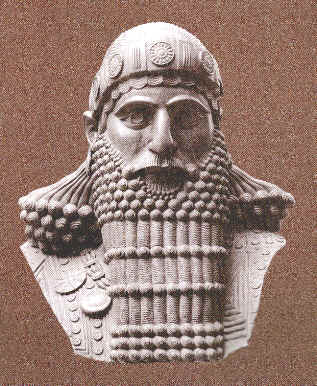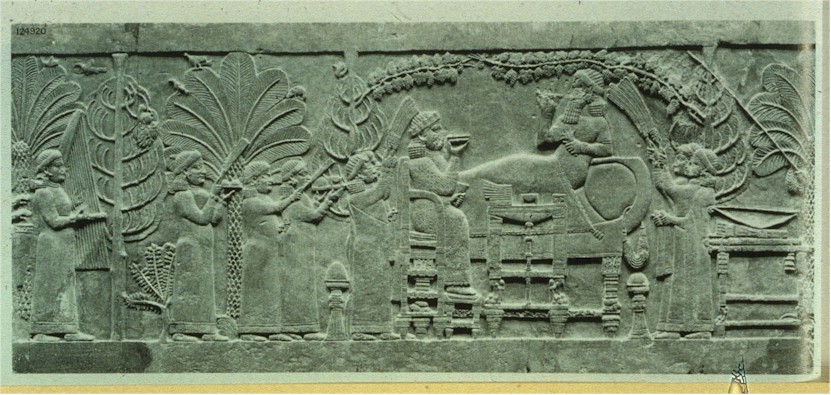



In 672 Esarhaddon decreed that one son, Ashubanipal, would succeed him on the throne of Assyria, and another son, Shamash-shum-ukin, would be king of Babylon. Esarhaddon made the latter swear an oath of loyalty to the former. Esarhaddon died in 669 and the arrangement worked for almost two decades.
Although Ashurbanipal reigned for 42years, he appears only once in the biblical record in Ezra 4:10 as "the great and noble Osnappar," the Hebrew form of his Assyrian name.
Ashurbanipal's greatest legacy was the impressive palace library he built. Assurbanipal paid to collect and to copy what were already ancient texts and carefully catalogue them. Among other things, Assurbanipal seemed to be interested in preserving the Sumerian and Akkadian cultural heritage in light of the developing dominance of Aramaic as the lingua franca.
Look at the breadth of his interest. He wrote these instructions:
Hunt for the valuable tablets which are in your archives and which do not exist in Assyria and send them to me. I have written to the officials and overseers ... and no one shall withhold a tablet from you; and when you see any tablet or ritual about which I have not written to you, but which you perceive may be profitable for my palace, seek it out, pick it up, and send it to me."
Assurbanipal’s library contained a wide variety of literature. There were examples of myths: Enuma Elish, the Gilgamesh Epic we talked about several weeks ago. There were hymns, prayers, rituals, texts dealing with divination and astrology. There were technical works on medicine and mathematics. Babylonian mathematics used the sexagesimal system that we still use for time (1 hour is comprised of 60 minutes is comprised of 60 seconds) and geometry (a circle is 360 degrees with each degree divided into 60 minutes and then 60 seconds). There were texts containing laws, contracts, administrative texts. There were also collections of royal correspondence.We may never know the actual size of the royal library but what was discovered in 1852 is a collection of some 1,200 works inscribed on roughly 25,000 clay tablets. Actually, the number of tablets and fragments catalogued was close to 100,000.
"The BrM text K 1295 is a receipt of tribute brought from Palestine. The text was published by R. F. Harper, ABL, Vol VI, No. 632, and has been translated repeatedly; cf. G. G. Boson, Les métaux et les pierres dans les inscriptions assyro-babyloniennes (Müchen, 1914), p. 51; R. H. Pfeiffer, in JBL, XLVII (1928), 185 f., and State Letters of Assyria (New Haven, 1935), No. 96; L. Waterman, Royal Correspondence of the Assyrian Empire (Ann Arbor, 1930), I, 440 f. The text is dated to the period between Sargon II and Esarhaddon."
Two minas of gold from the inhabitants of Bit-Ammon (matBît-Am-man-na-a-a); one mina of gold from the inhabitants of Moab (matMu-'-ba-a-a); ten minas of silver from the inhabitants of Judah (matIa-ú-da-a-a); [ . . .mi]nas of silver from the inhabitants of [Edom] (mat[U-du-ma]-a-a)....
(reverse)
...the inhabitants of Byblos, the district officers of the king, my lord, have brought.